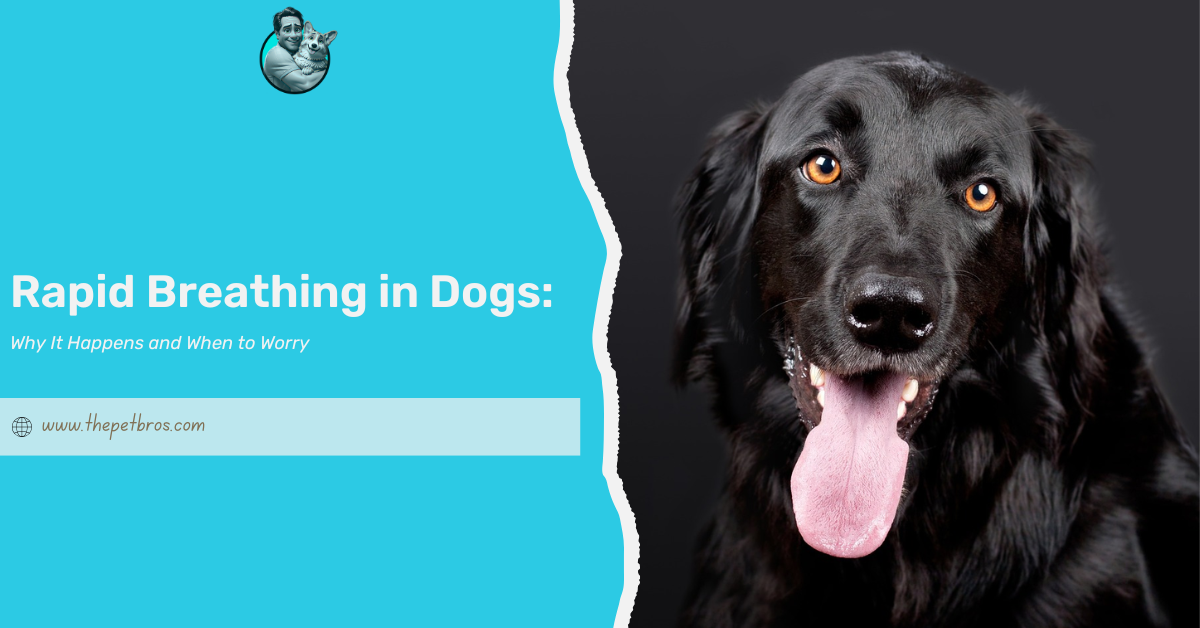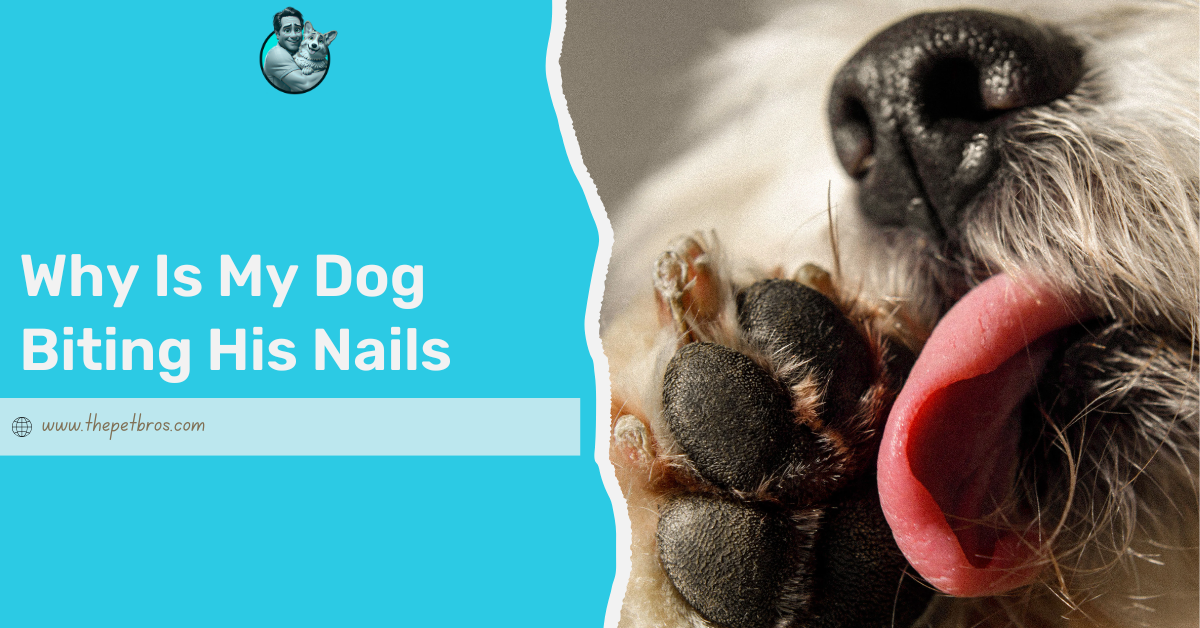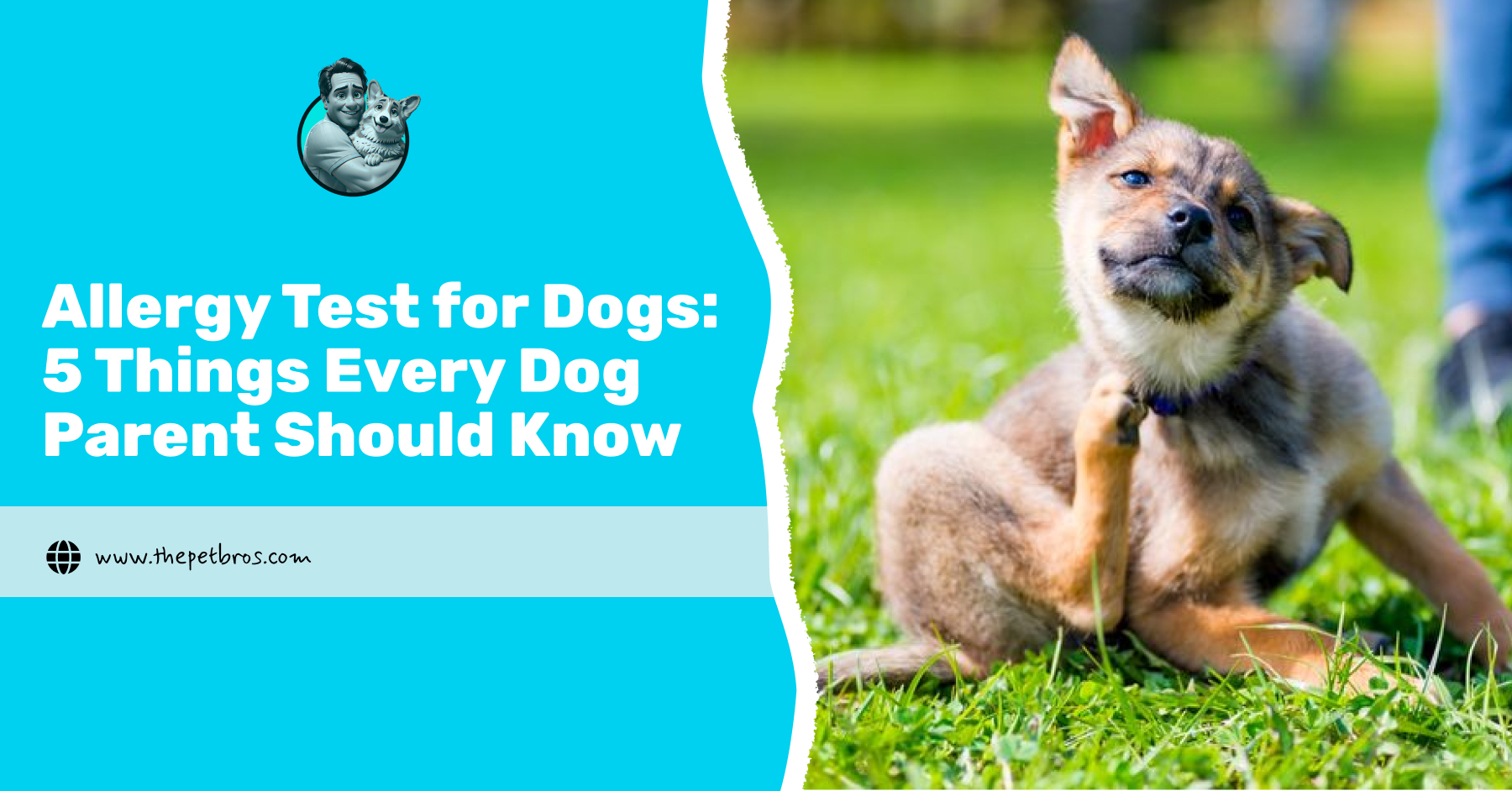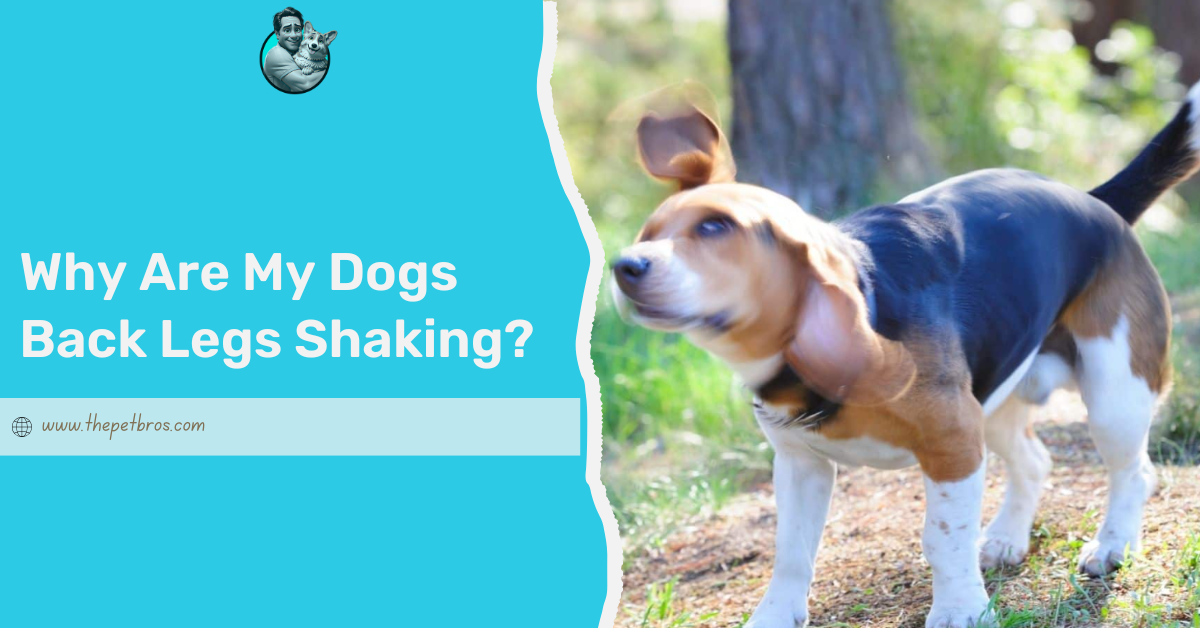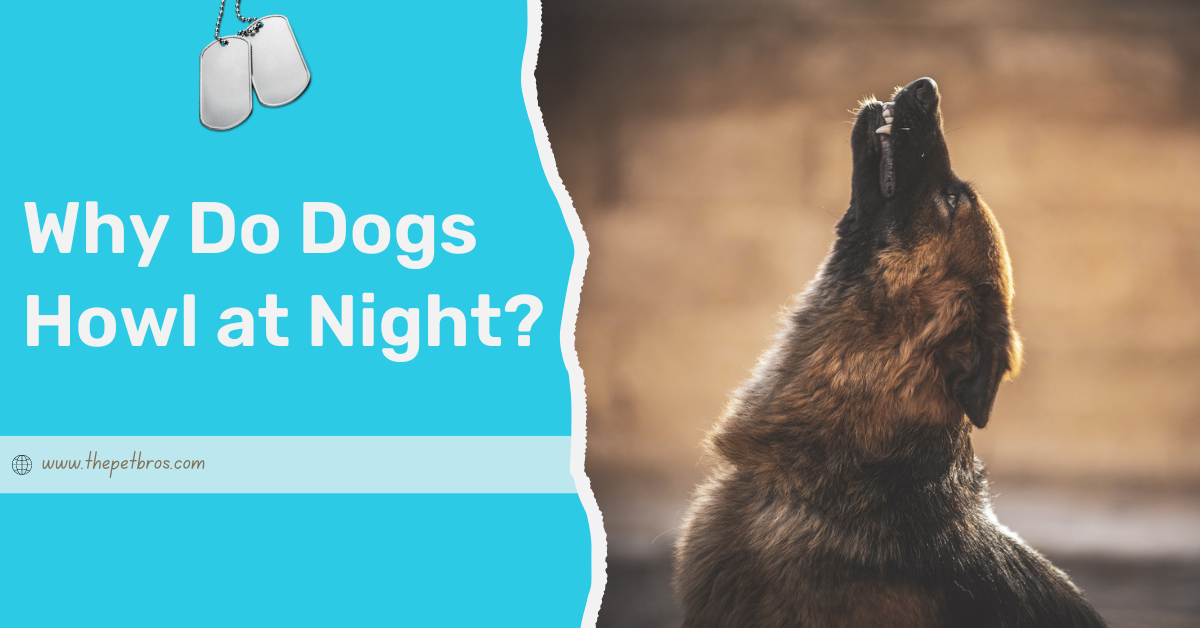Have you ever found your dog breathing rapidly like they just completed a marathon, except they have actually been napping all day? I mean, one minute they’re snoozing on the sofa, the next they’re huffing and puffing like they’re about to blow your house down. Should you be worried? Or is your dog just being dramatic? Don’t worry, I have answers!
A healthy dog at rest typically breathes between 15 and 35 times per minute. However, during exercise or excitement, their breathing rate naturally increases. If your dog is breathing more than 40 times per minute while at rest, it may indicate an underlying issue that needs attention.
In this article, we’ll dig into rapid breathing in dogs, when it’s normal, and when it’s time to swap Google searches for a vet visit. Let’s begin!
First, What Are the Factors Responsible for Rapid Breathing in Dogs?
Remember, dogs don’t breathe rapidly for no reason, there’s always a trigger behind it. To help you determine whether your dog’s rapid breathing is normal or concerning, let’s break down the key factors responsible for it.
1. Environmental Conditions
Dogs are highly sensitive to changes in their environment, particularly heat and humidity. Unlike humans, who sweat to cool down, dogs rely on panting to regulate their body temperature. When the weather is too hot, their bodies work overtime to prevent overheating, leading to rapid breathing.
For instance, if your dog has been outside on a scorching summer day, they’ll likely pant heavily to release heat. But if the panting continues even after they’ve had water and a chance to rest in a cool area, heat exhaustion or heat stroke could be setting in.
Symptoms of heatstroke include:
- excessive drooling,
- red gums,
- weakness, and
- collapse.
To prevent heat-related rapid breathing, ensure your dog has access to:
- Fresh water at all times to stay hydrated.
- Shade and ventilation when outdoors.
- Indoor spaces with fans or air conditioning on hot days.
2. Respiratory Problems
Just like us, dogs suffer from respiratory conditions that affect their ability to breathe normally. Illnesses such as pneumonia, bronchitis, or even allergies can lead to laboured breathing and panting at night, too. When a dog has trouble getting enough oxygen, their body compensates by breathing faster.
Signs of respiratory distress include:
- Coughing or wheezing, often seen in conditions like kennel cough or bronchitis.
- Nasal discharge, which can be clear, thick, or bloody mucus.
- Difficulty breathing associated with heavy or laboured inhaling and exhaling.
- Blue or pale gums, usually a sign of low oxygen levels.
Certain chronic respiratory diseases can also lead to persistent rapid breathing, even when a dog is at rest. These conditions may require long-term management, and they include:
- Chronic bronchitis: Long-term inflammation of the airways, common in middle-aged and older dogs, leading to coughing and difficulty breathing.
- Laryngeal paralysis: A condition where the larynx (voice box) doesn’t open properly, restricting airflow, especially in older large-breed dogs like Labradors.
- Tracheal collapse: Often seen in small breeds like Yorkshire Terriers, where the windpipe weakens and collapses, causing a honking cough and rapid breathing.
- Pulmonary fibrosis: A progressive lung disease that scars lung tissue, reducing oxygen intake and making breathing increasingly difficult, commonly affecting breeds like West Highland White Terriers.
- Brachycephalic Obstructive Airway Syndrome (BOAS): Flat-faced breeds like Bulldogs, Pugs, and Shih Tzus are prone to breathing difficulties due to their short snouts and narrow airways.
Your Yorkshire Terrier with tracheal collapse may also start breathing rapidly after excitement or exercise, often accompanied by a honking cough. Likewise, a Bulldog with BOAS may struggle to breathe even in mild heat due to airway obstruction.
3. Physical Activity and Excitement
We breathe faster after an intense workout session, right? Well, the same also applies to your dog after it engages in some form of exercise. This may include running, playing fetch, or even a long walk.
Excitement is also a huge culprit of rapid breathing. If your dog gets overly enthusiastic when greeting you at the door or when anticipating their favourite treat, they may pant excessively. Some breeds, like Labrador Retrievers and Jack Russell Terriers, are naturally more energetic and may exhibit fast breathing more often when excited.
However, if your dog’s breathing remains rapid long after exercise or excitement has passed, it could indicate an issue such as overexertion, dehydration, or an underlying health condition.
4. Stress and Anxiety
Dogs don’t just breathe fast when they’re hot or tired, stress and anxiety are also major triggers. When a dog is anxious, their body enters a “fight or flight” mode, causing their heart rate and breathing to increase. This is often accompanied by other signs of stress, such as whining, pacing, trembling, or avoiding eye contact.
Common anxiety-inducing situations that can lead to rapid breathing include:
- Loud noises from fireworks, thunderstorms, vacuum cleaners.
- Vet visits. Trust me not all dogs associate the vet with pleasant experiences.
- Separation anxiety, leading to excessive panting when left alone.
5. Pain or Injury
Although dogs are pretty good at hiding pain, rapid breathing can be one of the few signs that something is wrong. Whether it’s a minor injury, swollen toes, joint pain, or an internal issue, an increase in breathing rate helps them cope with discomfort.
For instance, if your dog suddenly starts breathing fast without an obvious cause, check for other signs of pain, such as:
- Limping or reluctance to move, indicating swollen paws, joint or muscle pain.
- Whining or growling when touched. This suggests soreness or injury.
- Lethargy or loss of appetite, often seen with internal pain, such as stomach issues.
A senior dog with arthritis might breathe rapidly due to chronic pain, especially after getting up from a long nap. If rapid breathing is accompanied by restlessness, unusual posture, or signs of distress, a vet visit is necessary.
6. Heart Disease
The heart and lungs work closely together, so when the heart isn’t functioning properly, a dog may experience rapid breathing. Heart disease can lead to poor circulation, fluid buildup in the lungs, and a reduced ability to oxygenate the blood, causing breathlessness.
Common signs of heart-related breathing problems include:
- Persistent coughing, especially at night or after lying down.
- Fatigue or reluctance to exercise.
- Swollen belly due to fluid retention.
Notably, older small-breed dogs, such as Cavalier King Charles Spaniels, are prone to mitral valve disease, a condition that can cause difficulty breathing. If your dog’s breathing is frequently rapid, especially at rest, a vet visit is crucial for diagnosing and managing any heart conditions.
7. Toxins and Allergic Reactions
Finally, exposure to toxins or allergens can trigger a sudden increase in breathing rate as the body reacts. Some toxins, such as chocolate, xylitol (a sweetener found in sugar-free gum), or certain plants, can cause rapid breathing, vomiting, and even seizures.
Common toxins that can lead to respiratory distress include household chemicals, including cleaning products, pesticides, human medications, like ibuprofen, paracetamol, antidepressants, and lastly, poisonous foods.
Similarly, severe allergic reactions, including anaphylaxis from an insect sting can cause swelling of the airways, making breathing difficult.
So, When Should You Worry About Your Dog’s Rapid Breathing?
As earlier stated, rapid breathing in dogs is quite normal. You should only be concerned if:
- Your dog breathes rapidly at rest or sleeping, as this can indicate heart disease, lung problems, or pain. Ensure you look for signs like excessive chest movement, difficulty getting comfortable, or restlessness.
- Breathing appears laboured or strained. By this I mean if your dog uses its belly muscles to breathe, flare its nostrils, or gasp, it could mean they’re struggling to get enough oxygen.
- Gums or tongue appear blue, pale, or dark red. A healthy gum should be pink.
- There’s excessive drooling, vomiting, or signs of poisoning.
- The Breathing issue persists or worsens over time.
Seeing these signs and delaying treatment could lead to severe complications or even be life-threatening.
Diagnosis and Treatment of Rapid Breathing in Dogs
Your vet will most likely combine physical examinations and diagnostic tests to identify the cause of your dog’s rapid breathing. Let’s take a closer look at the two methods.
- Physical Examination
- The vet will check your dog’s breathing rate, effort, and lung sounds.
- They’ll look for signs of pain, fever, or respiratory distress.
- Gum colour will be examined to check oxygen levels (pale, blue, or dark red gums are concerning).
- Diagnostic Tests
If an underlying health issue is suspected, the vet may recommend:
- X-rays (radiographs): Check for lung disease, fluid buildup, or heart problems.
- Blood tests: To detect infections, inflammation, or organ-related issues.
- Pulse Oximetry or Blood Gas Analysis: To measure oxygen levels in the blood.
- Ultrasound or Echocardiogram: Only if you suspect heart disease.
- Bronchoscopy: A tiny camera inserted into the airways to detect obstructions or chronic conditions.
Treatment of Rapid Breathing in Dogs
The right treatment depends on the underlying cause. If rapid breathing is due to heat, stress, or excitement, consider moving your dog to a cool, calm environment with fresh water. However, if the issue is severe, such as respiratory disease, heart problems, or pain, consult your veterinarian immediately.
In most cases, respiratory infections or lung conditions may involve use of antibiotics, oxygen therapy, or medications to ease breathing. Similarly, heart disease-related breathing issues require long-term medication, diuretics to reduce fluid buildup, and lifestyle adjustments. If breathing difficulties stem from injury, pain, or poisoning, pain relief, IV fluids, or emergency care may be necessary.
In severe cases, surgery might be required, such as for tracheal collapse, BOAS (in flat-faced breeds), or laryngeal paralysis. Dogs with chronic conditions may need ongoing medication and management to improve their breathing and overall quality of life.
So, What?
Rapid breathing in dogs isn’t always a cause for concern, but if it happens at rest, is laboured, or comes with other symptoms, it could signal a serious issue. Early diagnosis and treatment are key to keeping your dog healthy.
Have we been able to answer your question as to why your dog is experiencing rapid breathing? Let us know in the comments! Remember in severe cases, contact your vet immediately to ensure your furry friend gets the care they need!
FAQs
When should I worry about my dog’s rapid breathing?
You should be concerned if your dog is breathing rapidly while at rest or asleep, if their breathing appears laboured or strained, if their gums or tongue appear blue or pale, or if they’re showing signs of poisoning like drooling or vomiting. If the rapid breathing persists or worsens, it’s crucial to seek veterinary care.
How can I help my dog if they’re breathing rapidly due to heat?
If your dog is breathing rapidly due to heat, move them to a cool, shaded area, provide fresh water, and keep them calm. Ensure that your dog has access to shade and ventilation, especially on hot days, to prevent heatstroke.






